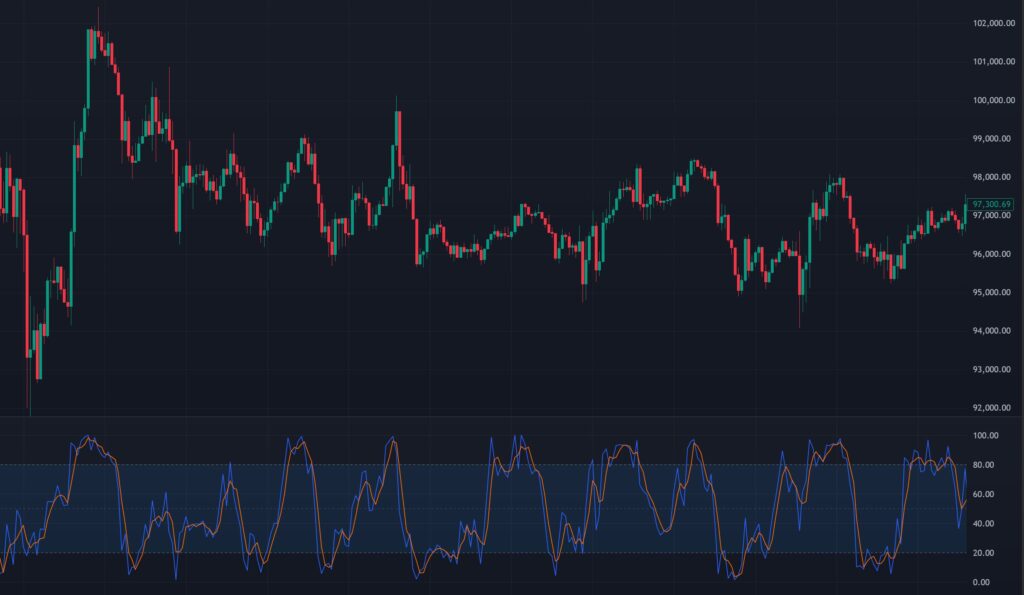The world of trading is filled with technical indicators designed to help traders make informed decisions, and one of the most popular among them is the Stochastic Oscillator. Widely used in financial markets, this momentum indicator helps traders identify potential reversals, overbought or oversold conditions, and optimal entry or exit points. In this article, we’ll break down what the Stochastic Oscillator is, how it works, how to read it, and how it can be applied effectively in trading.
What Is the Stochastic Oscillator?
The Stochastic Oscillator, developed by George Lane in the late 1950s, is a momentum indicator that compares a security’s closing price to its price range over a specific period of time. The underlying idea is that in an uptrend, prices tend to close near their highs, while in a downtrend, they close near their lows. By measuring this relationship, the Stochastic Oscillator provides insights into the strength or weakness of a trend and potential reversal points.
The indicator is expressed as a value between 0 and 100, making it easy to interpret. It consists of two lines:
- %K: The main line, representing the current value of the oscillator.
- %D: A signal line, typically a 3-period moving average of %K, used to smooth out the data and generate trading signals.

How Does the Stochastic Oscillator Work?
The Stochastic Oscillator is calculated using the following formula:
%K=100×((C−Ln)/(Hn−Ln))
Where:
- C = The most recent closing price.
- Lₙ = The lowest price over the lookback period (commonly 14 periods).
- Hₙ = The highest price over the lookback period (commonly 14 periods).
The %D line is then derived by taking a 3-period simple moving average of %K:
%D=3-period SMA of %K
The default setting for the Stochastic Oscillator is 14 periods, which could represent 14 days on a daily chart, 14 hours on an hourly chart, or any other timeframe depending on the trader’s preference. However, these settings can be adjusted to suit different trading styles—shorter periods for faster signals or longer periods for smoother, less frequent signals.
The oscillator essentially measures where the current price stands relative to its recent range. A high %K value (close to 100) indicates the price is near its highs, while a low value (close to 0) suggests it’s near its lows.
How to Read the Stochastic Oscillator?
The Stochastic Oscillator is plotted on a chart with two key threshold levels: 20 and 80. These levels help traders interpret the indicator:
- Overbought Conditions (Above 80):
- When the %K line rises above 80, it suggests the asset may be overbought—meaning its price has risen too far, too fast, and could be due for a pullback or reversal.
- However, in strong uptrends, the oscillator can remain above 80 for extended periods, so overbought readings alone don’t guarantee a sell signal.
- Oversold Conditions (Below 20):
- When the %K line falls below 20, the asset may be oversold—indicating it has fallen too much and could be primed for a bounce or reversal.
- Similarly, oversold conditions can persist in strong downtrends, so this isn’t an automatic buy signal.
- Crossovers:
- A key signal occurs when the %K line crosses the %D line:
- Bullish Crossover: %K crosses above %D below the 20 level, suggesting a potential buy opportunity.
- Bearish Crossover: %K crosses below %D above the 80 level, indicating a potential sell opportunity.
- A key signal occurs when the %K line crosses the %D line:
- Divergences:
- Divergences between the Stochastic Oscillator and price action can signal reversals:
- Bullish Divergence: Price makes a lower low, but the oscillator makes a higher low, hinting at weakening downward momentum.
- Bearish Divergence: Price makes a higher high, but the oscillator makes a lower high, suggesting fading upward momentum.
- Divergences between the Stochastic Oscillator and price action can signal reversals:
How to Use the Stochastic Oscillator in Trading?
The Stochastic Oscillator is versatile and can be used in various trading strategies. Here are some practical applications:
- Identifying Overbought and Oversold Levels:
- Traders can use the 80 and 20 levels to spot potential reversal points. For example, if a stock’s %K drops below 20 and then crosses above %D, it might be a good time to buy, assuming other indicators confirm the signal.
- Trading Crossovers:
- The crossover of %K and %D is a popular signal. A trader might enter a long position when %K crosses above %D in oversold territory and exit or sell when %K crosses below %D in overbought territory.
- Confirming Trends:
- In trending markets, the Stochastic Oscillator can help confirm momentum. For instance, if the oscillator stays above 50 during an uptrend, it supports the bullish bias. Conversely, staying below 50 reinforces a bearish trend.
- Spotting Divergences:
- Divergences are powerful for anticipating reversals. A trader might wait for a bullish divergence (price lower, oscillator higher) near a support level before buying, or a bearish divergence near resistance before selling.
- Combining with Other Indicators:
- The Stochastic Oscillator works best when paired with other tools like moving averages, RSI, or support/resistance levels. For example, a bullish crossover in an oversold zone near a key support level provides stronger confirmation for a buy.
Tips for Effective Use
- Adjust Settings: The default 14-period setting may not suit every market or timeframe. Day traders might use a 5-period Stochastic for faster signals, while swing traders might prefer 21 periods for smoother results.
- Avoid Overreliance: Overbought or oversold readings don’t always mean an immediate reversal, especially in strong trends. Always consider the broader market context.
- Use in Range-Bound Markets: The Stochastic Oscillator shines in sideways or choppy markets, where overbought and oversold signals are more reliable. In trending markets, it’s prone to false signals unless paired with trend-following tools.
Conclusion
The Stochastic Oscillator is a powerful and straightforward tool for traders looking to gauge momentum and spot potential reversals. By understanding its components (%K and %D), interpreting its signals (overbought/oversold, crossovers, divergences), and applying it strategically, traders can enhance their decision-making process. However, like any indicator, it’s not foolproof and works best when combined with other analysis techniques and a solid risk management plan.
Happy Trading!

